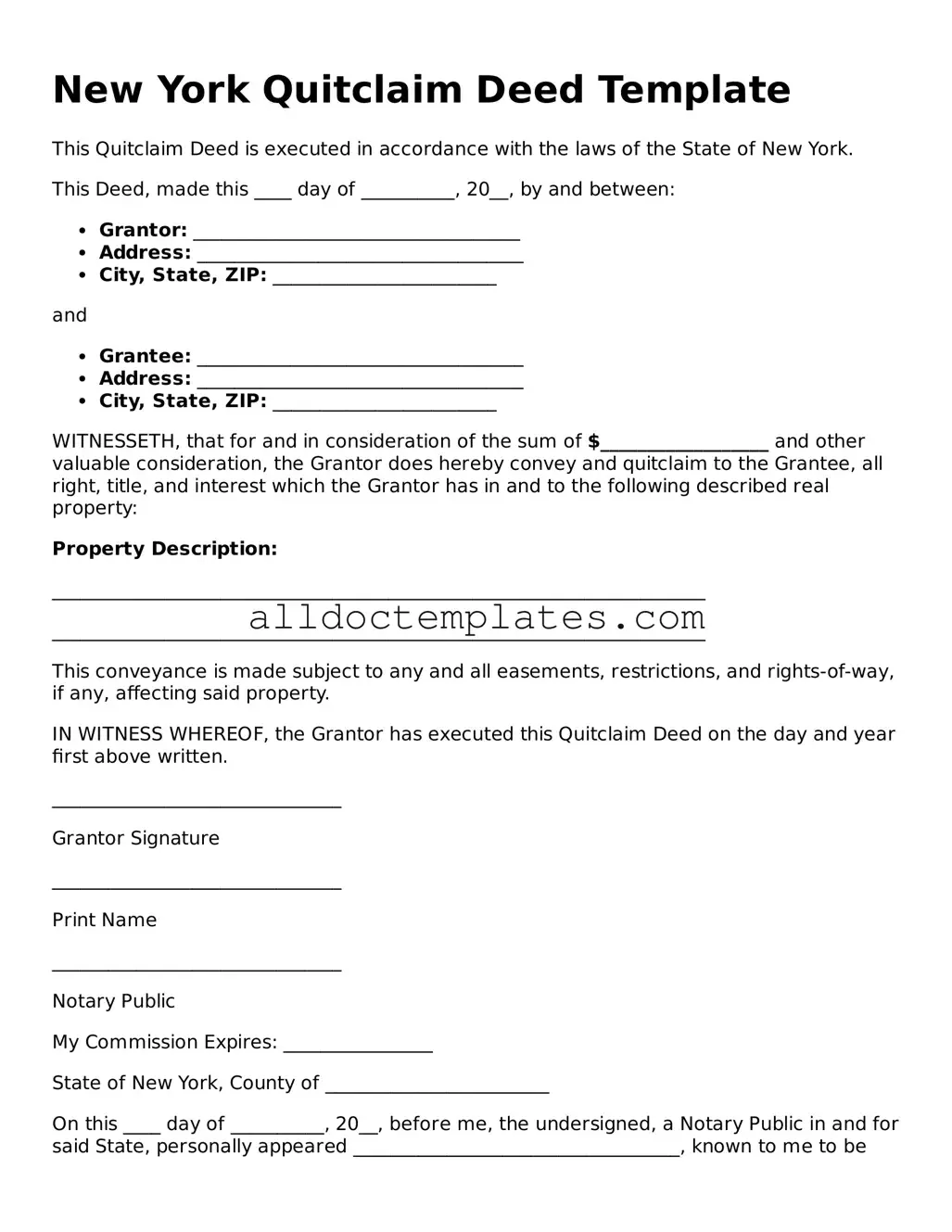New York Quitclaim Deed Template
This Quitclaim Deed is executed in accordance with the laws of the State of New York.
This Deed, made this ____ day of __________, 20__, by and between:
- Grantor: ___________________________________
- Address: ___________________________________
- City, State, ZIP: ________________________
and
- Grantee: ___________________________________
- Address: ___________________________________
- City, State, ZIP: ________________________
WITNESSETH, that for and in consideration of the sum of $__________________ and other valuable consideration, the Grantor does hereby convey and quitclaim to the Grantee, all right, title, and interest which the Grantor has in and to the following described real property:
Property Description:
______________________________________________________________________
______________________________________________________________________
This conveyance is made subject to any and all easements, restrictions, and rights-of-way, if any, affecting said property.
IN WITNESS WHEREOF, the Grantor has executed this Quitclaim Deed on the day and year first above written.
_______________________________
Grantor Signature
_______________________________
Print Name
_______________________________
Notary Public
My Commission Expires: ________________
State of New York, County of ________________________
On this ____ day of __________, 20__, before me, the undersigned, a Notary Public in and for said State, personally appeared ___________________________________, known to me to be the person whose name is subscribed to the within instrument and acknowledged that they executed the same.
_______________________________
Notary Public Signature
